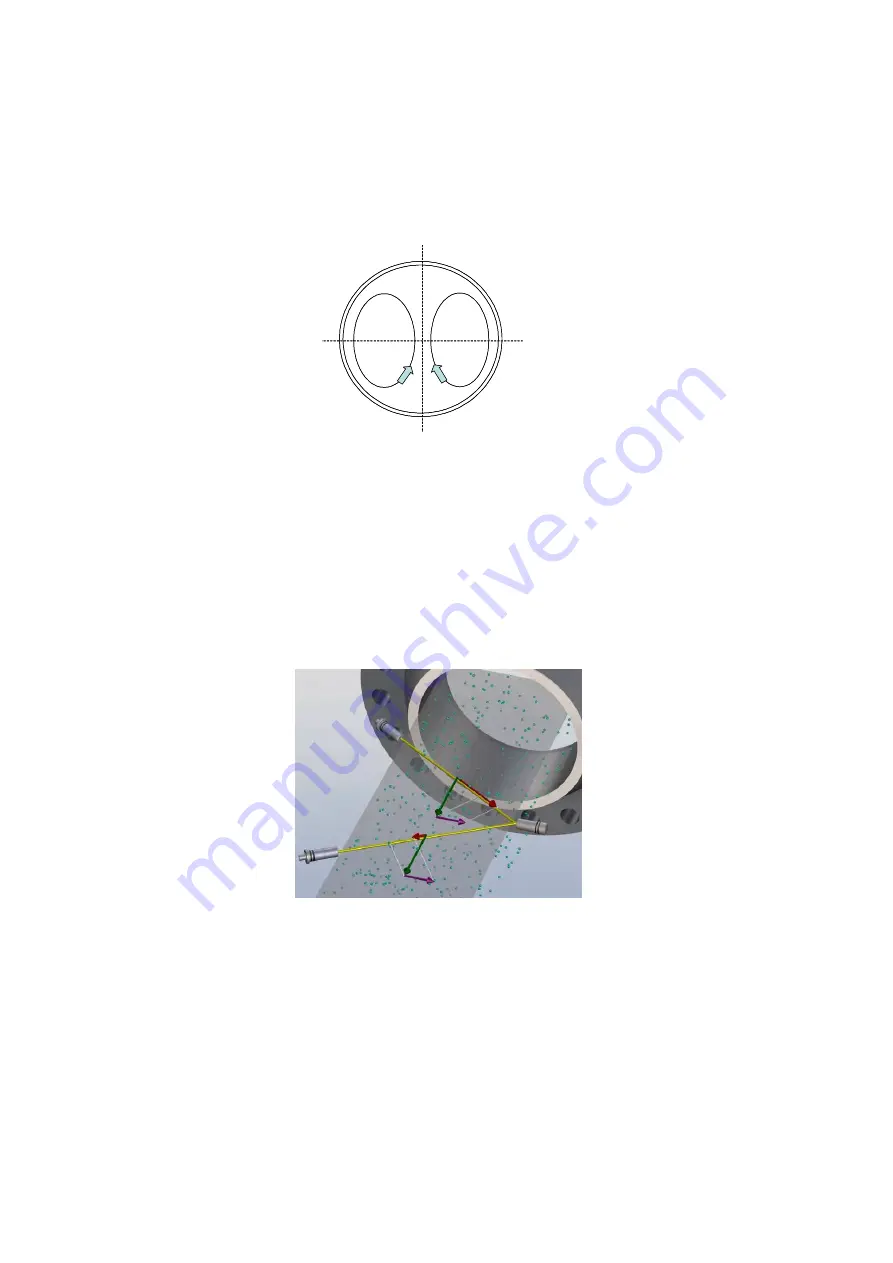
Operation & Installation Manual V12-V6 2010-05-31.doc
31/05/2010
10/60
When looking at specific spots in the pipe, the local gas velocity vector may not be exactly
parallel to the pipe axis. This effect can be the result of a flow velocity pattern called swirl.
This is a frequently occurring velocity pattern where the gas mass in the pipe rotates as it
flows. The rotation can be symmetrical with respect to the pipe axis as shown in the picture
above.
Asymmetrical swirl.
Figure 2-3: Asymmetrical swirl.
Another velocity pattern that frequently occurs, especially downstream of an elbows or bend
in the pipeline, is asymmetrical swirl as shown in the picture above. The gas mass splits in
two contra rotating volumes.
Swirl can disturb the gas velocity measurement as the tangential velocity component adds up
with the gas velocity measured along one chord. However chords can be arranged in a way
to compensate for swirl effects. Two chords arranged in the same plane intersect the flow at
opposite angles (cross configuration). These chords respond to the tangential velocity
component with the same magnitude but with the opposite sign.
Figure 2-4: Swirl Compensation
This allows cancellation of the swirl effect by adding or averaging the measured velocity
value of both chords. Using an acoustic path with two chords in a V-shape, with a reflecting
signal, has the same effect. The measured flow velocity is increased by the tangential
component on one leg and decreased by the same value on the other leg.
2.1.3. Multipath ultrasonic flow meters
With an ultrasonic measuring system the measured gas velocity value is the average
velocity sampled across the length of the acoustic path. Due to distortion of the gas velocity
profile in the pipe this value may not be representative for the average gas velocity across
the whole of the pipe cross section. In order to obtain a high accuracy the flow is sampled

























